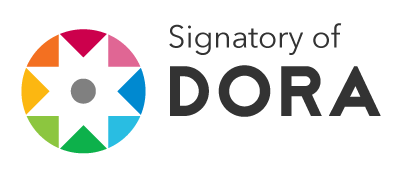THE ECONOMICS AND STRATEGIC MANAGEMENT DEBATE ON FIRM PERFORMANCE AND TECHNOLOGICAL CHANGE
Resumen
Este artículo analiza el debate que establecen la teoría económica y el análisis de gestión en relación al desempeño de la firma y el cambio tecnológico. La perspectiva teórica seguida en este artículo va desde el enfoque sugerido por la teoría de la firma de Penrose, la hipótesis de la capacidad de absorción, el análisis de la firma basado en sus recursos, las explicaciones schumpeterianas y de la teoría evolucionista acerca de la innovación que generan la posibilidad de identificar algunos principios teóricos complementarios (o alternativos) al enfoque neoclásico. Se concluye que el comportamiento de la firma se caracteriza por seguir una trayectoria dependiente como proceso evolutivo basado en el principio de que la generación del conocimiento es acumulativa y colectiva que no necesariamente evoluciona suavemente.
Descargas
Citas
Ayers, C. E. (1978). The Theory of Economic Progress, Kalamazoo, MI: New Issues Press.
Beije, P. (1998). Technological Change in the Modern Economy, Cheltenham, UK, and Northampton, MA: Edward Elgar.
Cantwell, J. A. (1999). “Innovation as the principal source of growth in the global economy”, in Archibugi, D. et al. (eds.), Innovation Policy in a Global Economy, Cambridge: Cambridge University Press.
Castrogiovanni. (1991). “Environmental munificence: A theoretical assessment”, Academy of Management Review 16: 542-565.
Chandler, A. D. (1962). Strategy and Structure, Cambridge, MA: MIT Press.
Coase, R. H. (1937). “The nature of the firm”, in G. J. Stigler, and K. E. Boulding (eds.), Readings in Price Theory, Homewood, IL: Richard D. Irwin.
Cohen, W. M., and D. A. Levinthal (1989). “Innovation and learning: The two faces of R&D”, The Economic Journal, 99: 569-596.
Cohen, W. M., and D. A. Levinthal (1990). “Absorptive capacity: A new perspective on learning and innovation”, Administrative Science Quarterly 35: 128-152.
Coombs, R., V. Walsh, and P. Saviotti (1987). Economics and Technological Change, Totowa, NJ: Rowman and Littlefield.
Dosi, G., R. Giannetti, and P. M. Toninelli (1992). “Introduction. Theory and history of technology and business firms: The microeconomics of industrial development”, in G. Dosi, R. Giannetti, and P. M. Toninelli (eds.), Technology and Enterprise in a Historical Perspective, Oxford: Clarendon Press.
Dosi, G., and L. Marengo, (1994). “Toward a theory of organizational competences”, in R. W. England (ed.), Evolutionary Concepts in Contemporary Economics, Ann Arbor, MI: Michigan University Press.
Granstrand et al. (1997).
Granstrand and Sjölander (1990).
Jacobson, R. (1992). “The Austrian school of strategy”, Academy of Management Review 17: 782-807.
Malerba, F. and L. Orsenigo, (1997). “Schumpeterian patterns of innovation”, in D. Archibugi, and J. Michie (eds.), Technology, Globalization and Economic Performance, Cambridge and New York: Cambridge University Press.
Mahoney, J. (1995). “The management of resources and the resources of management”, Journal of Business Research 33: 91-101.
Mulder, P., H. L. F. De Groot, and M. W. Hofkes (2001). “Economic growth and technological change: A comparison of insights from a neo-classical and an evolutionary perspective”, Technological Forecasting and Social Change 68: 151-171.
Nelson, R. R., and S. G. Winter (1982). An Evolutionary Theory of Economic Change, Cambridge, MA.: Harvard University Press.
Nelson, R. R. (1992). “The roles of firms in technical advance: A perspective from evolutionary theory”, in G. Dosi, R. Giannetti, and P. M. Toninelli (eds.), Technology and Enterprise in a Historical Perspective, Oxford: Clarendon Press.
Nelson, R. R. (1994). “Why do firms differ, and how does it matter?” in R. P. Rumelt, D. J. Teece, and D. E. Schendel (eds.), Fundamental Issues in Strategy: A Research Agenda, Cambridge, MA: Harvard Business School Press.
Nelson, R. R. (1995). “Co-evolution of industry structure, technology and supporting institutions, and the making of comparative advantage”, Journal Business Economics 2: 171-184.
Nelson, R. R. (1998). “The agenda for growth theory: A different point of view”, Cambridge Journal of Economics 22: 497-520.
Knight, F. H. (1921). Risk, Uncertainty, and Profit, Boston, MA: Houghton Mifflin.
Pavitt, K. (2001). “Can the Large Penrosian Firm Cope with the Dynamics of Technology? Science and Technology Policy Research (SPRU)”, Paper Series No. 68, University of Sussex.
Penrose, E. T. (1959). The Theory of the Growth of the Firm, Oxford: Basil Blackwell.
Porter, M. E. (1994). “Toward a dynamic theory of strategy”, in R. P. Rumelt, D. J. Teece, and D. E. Schendel (eds.), Fundamental Issues in Strategy: A Research Agenda, Cambridge, MA: Harvard Business School Press.
Rosenberg, N. (1982). Inside the Black Box: Technology and Economics, Cambridge: Cambridge University Press.
Rugman, A. M., and A. Verbeke (2002). “Edith Penrose's contribution to the resource-based view of strategic management”, Strategic Management Journal 23: 769-780.
Rumelt, R. P., D. J. Teece, and D. E. Schendel (1994). Fundamental Issues in Strategy: A Research Agenda, Cambridge, MA: Harvard Business School Press.
Sanchez, R. (1995). “Strategic flexibility in product competition”, Strategic Management Journal 16: 135-159.
Scherer, F. M. (1984). Innovation and Growth: Schumpeterian Perspective, Cambridge, MA: MIT Press.
Schumpeter, J. A. (1934). The Theory of Economic Development, Cambridge, MA: Harvard University Press.
Schumpeter, J. A. (1942). Capitalism, Socialism and Democracy, London: Allen and Unwin. Simon, H. (1982). Models of Bounded Rationality, Cambridge, MA: MIT Press.
Teece, D. J. (1982). “Towards an economic theory of the multiproduct firm”, Journal of Economic Behavior and Organization 3: 39-63.
Teece, D. J. (1984). “Economic Analysis and Strategic Management”, California Management Review 26 (3): 87-110.
Teece, D. J. (2009). Dynamic Capabilities and Strategic Management: Organizing for Innovation and Growth, Oxford University Press.
Teece, D. J. et al. (1997). “Dynamic Capabilities and Strategic Management”, Strategic Management Journal 18: 509-533.
Williams, J. R. (1994). “Strategy and the search for rents: The evolution of diversity among firms”, in R. P. Rumelt, D. J. Teece, and D. E. Schendel (eds.), Fundamental Issues in Strategy: A Research Agenda, Cambridge, MA: Harvard Business School Press.
Williamson, O. E. (1975). Markets and hierarchies: Analysis and antitrust implications: A study in the economics of internal organization, New York: Free Press.
Williamson, O. E. (1989). “Transaction Cost Economics”, in Richard Schmalensee and Robert Willig (eds.), Handbook of Industrial Organization, New York: North-Holland.

Esta obra está bajo licencia internacional Creative Commons Reconocimiento-NoComercial-CompartirIgual 4.0.














